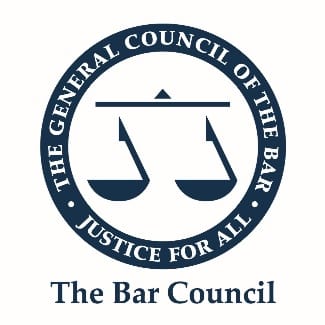Post-Separation Income: Has Rossi Survived Waggott and Standish?
In Rossi v Rossi [2007] 1 FLR 790 Nicholas Mostyn QC (sitting as a Deputy High Court Judge) adopted a formulaic approach in relation to ‘a post-separation bonus or other earned income’. He stated at [24.4] that ‘[a]lthough there is an element of arbitrariness’ he would not allow a post-separation bonus to be classed as non-matrimonial ‘unless it related to a period which commenced at least 12 months after the separation’. One assumes he intended to extend the same principle to post-separation earned income per se.
This somewhat rigid view was described as a ‘helpful and accurate analysis’ by Singer J in S v S (Ancillary Relief After Lengthy Separation) [2007] 1 FLR 2120 at [111] but by the same judge as ‘workable but … over-simplistic’ in H v H (Financial Provision) [2009] 2 FLR 795 at [75].
Mostyn J restated his view in JL v SL (No 2) (Appeal: Non-Matrimonial Property [2015] 2 FLR 1202 at [36].
However, in H v H [2007] 2 FLR 548 Charles J at [57] described the Rossi approach – one ‘that is acknowledged to be arbitrary, and which, therefore, does not have regard to the realities and circumstances of a given case’ – as being ‘not correct’. Such an arbitrary rule (at [58]) ‘plainly gives rise to the potential for arguments by reference to, for example, company years or accounting periods in respect of which bonus (or other income) is calculated and the possibility of a whole year's bonus being excluded or included if for example parties separated on 30 December, or on 2 January’. In Cooper-Hohn v Hohn [2015] 1 FLR 745 at [179] Roberts J stated at [179] that in addition to his view it was arbitrary in its application, Charles J had considered ‘it failed to reflect the reality of the relationship between the parties which was essentially no longer “matrimonial” in character or essence’.
In C v C (Post-Separation Accrual) [2019] 1 FLR 939 Roberts J herself took a less rigid view. She stated at [68], ‘I do not accept that, in terms of the date of receipt of funds, proximity to the effective end of the marriage has any determinative effect per se on a decision as to whether property received post-separation is matrimonial or non-matrimonial’.
In Waggott v Waggott [2018] 2 FLR 406 Moylan LJ was unequivocal in his conclusion at [122] that an earning capacity is not capable of being a matrimonial asset to which the sharing principle applies and in the product of which, as a result, an applicant spouse has an entitlement to share. As he stated at [128] ‘an earning capacity is not property … it results in the generation of property after the marriage’ (original emphasis).
It may be said that the fact that something is ‘arbitrary’ is not in itself an issue. In Jones v Jones [2011] 1 FLR 1723 at [35] Wilson LJ (as he then was) stated that ‘application of the sharing principle is inherently arbitrary; such is, I suggest, a fact which we should accept and by which we should cease to be disconcerted’. It must be arguable that adopting the date of separation is less arbitrary than one 12 months thereafter. The marital partnership ends as at the date of separation and (per Baroness Hale of Richmond in Miller/McFarlane [2006] 1 FLR 1186 at [144]) ‘[i]n general, … the marital partnership does not stay alive for the purpose of sharing future resources unless this is justified by need or compensation’.
Waggott did not, however, change Mostyn J’s view. In E v L (Financial Remedies) [2022] 1 FLR 952 he said at [73] that ‘[f]or new assets, such as earnings made during separation, I would apply the yardstick in Rossi v Rossi’. Subsequently in CG v DL [2023] EWFC 82 (Fam) Sir Jonathan Cohen stated at [45] that he agreed with the analysis in Rossi at [24.4] and in GA v EL [2023] EWFC 206 Stephen Trowell KC (sitting as a Deputy High Court Judge) stated at [61] that [24.4] ‘does bear consideration’, albeit this was in the context that it ‘highlights entirely properly that one cannot overlook the non-financial contribution of the domestic party’.
However, none of these decisions consider the potential impact of Waggott on the argument that income (or one assumes the assets or capital generated therefrom) earned or referable to the first 12 months post-separation should be classed as matrimonial property to which the sharing principle applies.
Further, how does this approach square with Standish v Standish [2024] 2 FLR 966? As Moylan LJ stated at [162]:
‘it is a derogation from the principle that sharing applies to matrimonial property and does not apply to non-matrimonial property, it should be applied narrowly. This is so that it is not used by parties in a way which would undermine the clarity of the sharing principle, namely that it is the sharing of property generated by the parties' endeavours during the marriage.’
And at [163]: ‘it would be helpful to make clear, expressly, that the concept of matrimonialisation should be applied narrowly’. As Geoffrey Kingscote KC (sitting as a Deputy High Court Judge) observed in AF v GF [2024] EWFC 3479 (Fam) at [53], in relation to matrimonialisation Standish ‘arguably, has narrowed its applicability’.
If this is true in relation to pre-marital non-matrimonial property then, as its obverse, is it not also true in relation to post-separation non-matrimonial property such as one party’s income?
The editors of the Family Court Practice 2024 observe at [2.1051[6]]: ‘Query whether any of these [i.e. the Rossi et al] approaches has survived Waggott v Waggott … which does not allow for post-separation sharing of income’. We await a judgment as to whether this is correct.





